Kaijusenji Temple
- About
- Location & Admission
- Photo Gallery
-
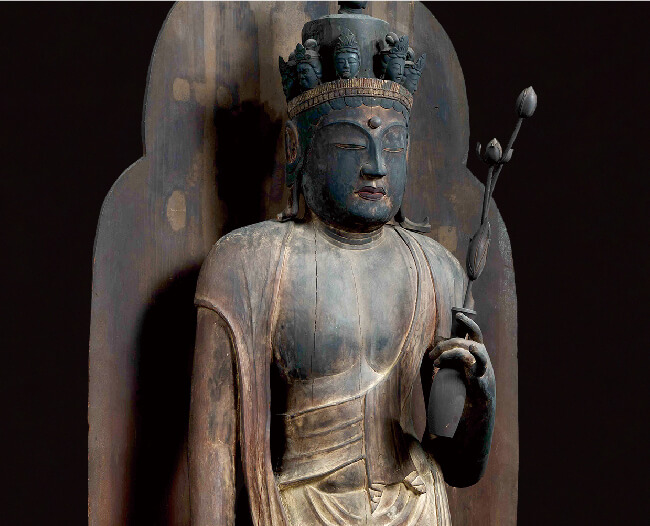
-
Opening hours 9:00-17:00 (Last admission at 16:30) Entrance fee Individual: Adult 500yen, Middle & High school student 300yen (During a Special viewing of privately owned cultural propaties: extra charge)
Only Hiking or Photographing or Stroll: 100yen (During a Special viewing of privately owned cultural propaties:300yen)TEL 0774-76-2256 Address 20 Reihei Kaijusen,Kamo-cho,Kizugawa-shi,Kyoto,619-1106 Official Web http://www.kaijyusenji.jp/ Access
About 5 minutes by Nara Kotsu bus bound for "Wazuka-kosugi" from JR Kansai Line "Kamo" station , and get off at "Okazaki (Kamo)" about 30 minutes on foot./About 10 minutes by taxi from JR Kansai Line "Kamo" station.
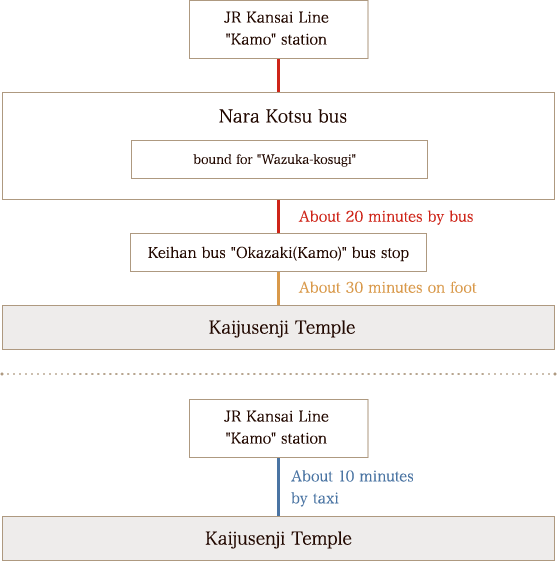
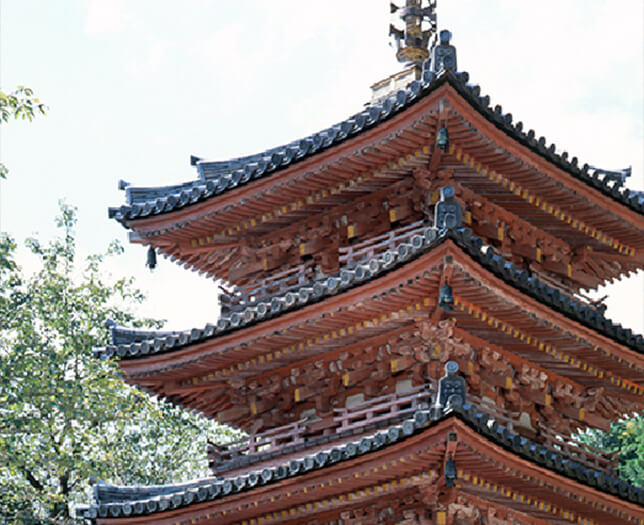

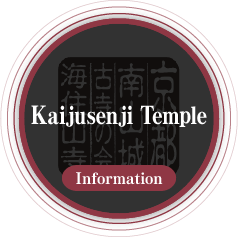
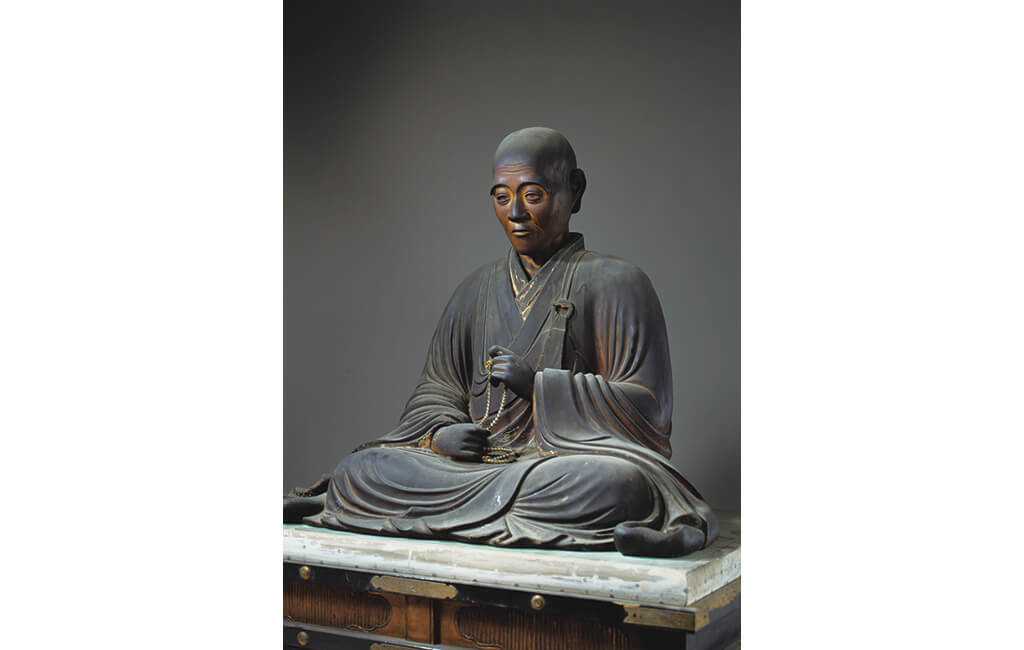
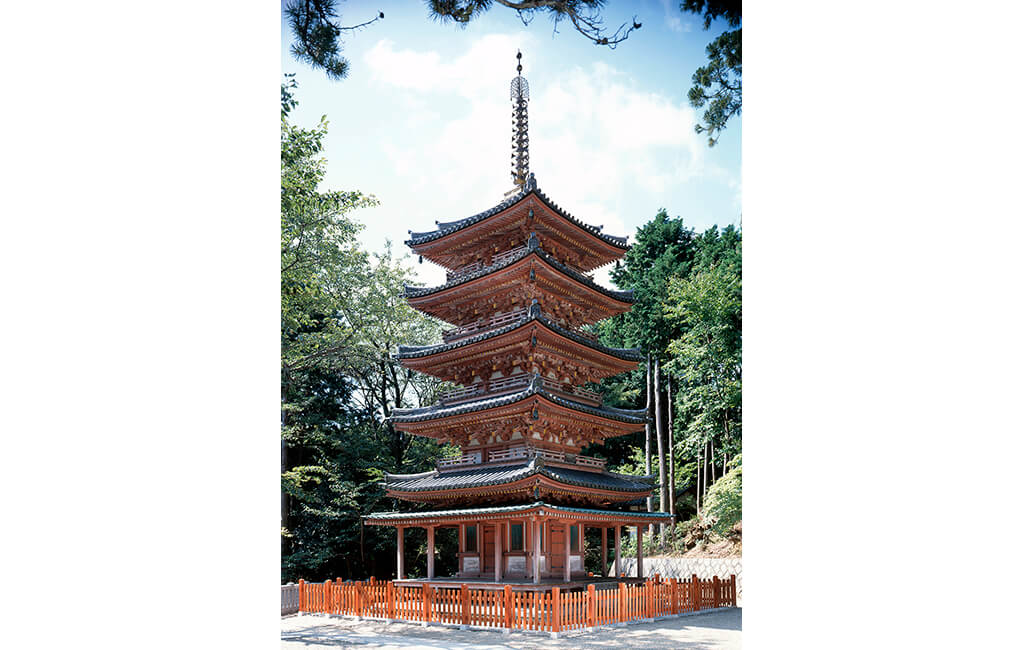
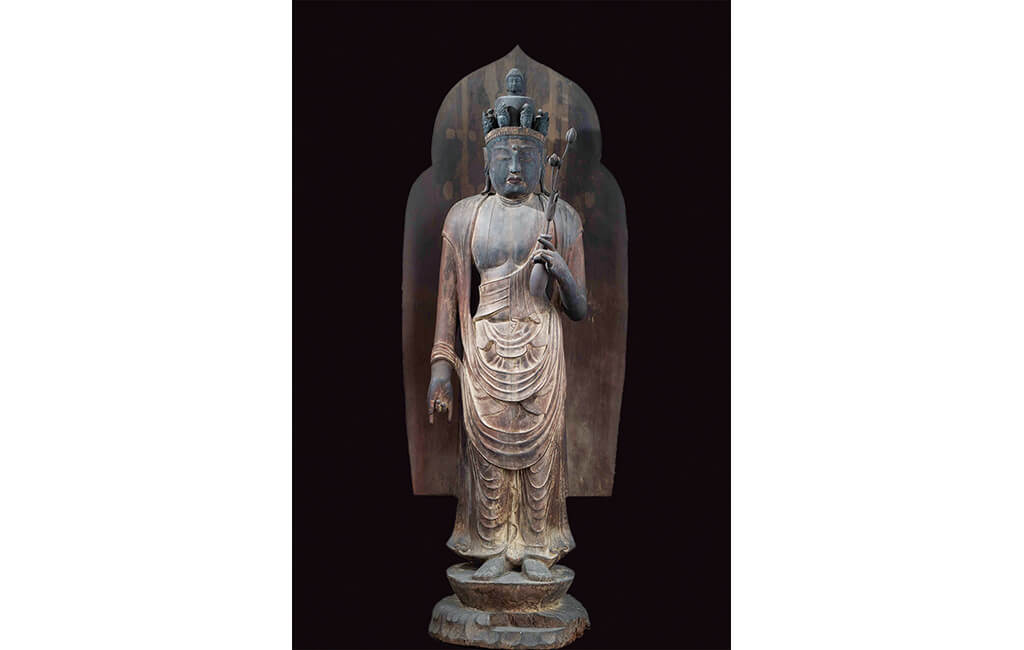
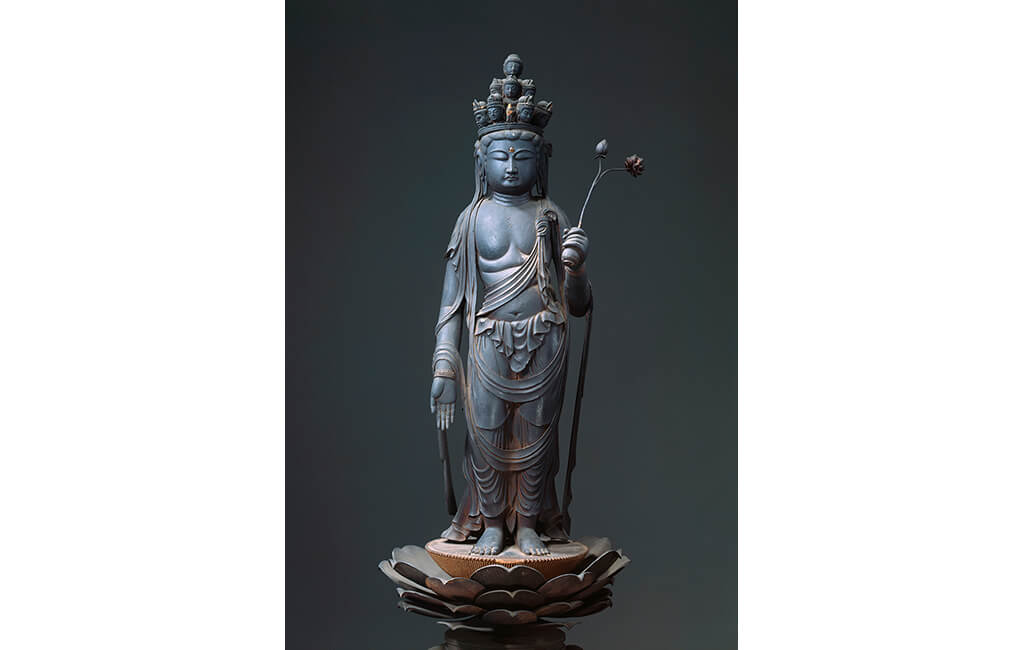
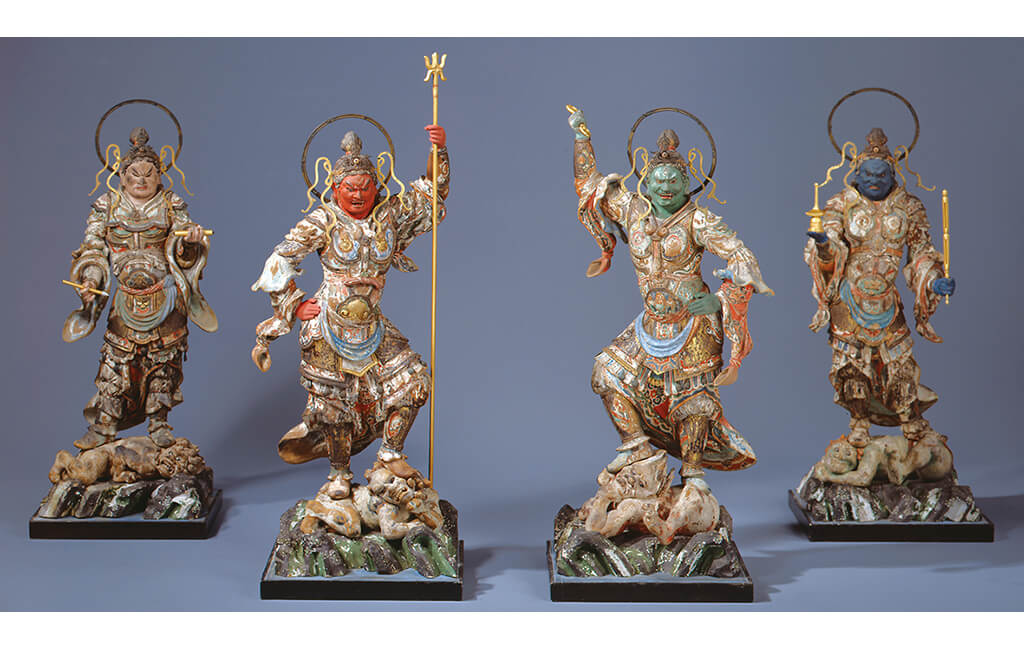
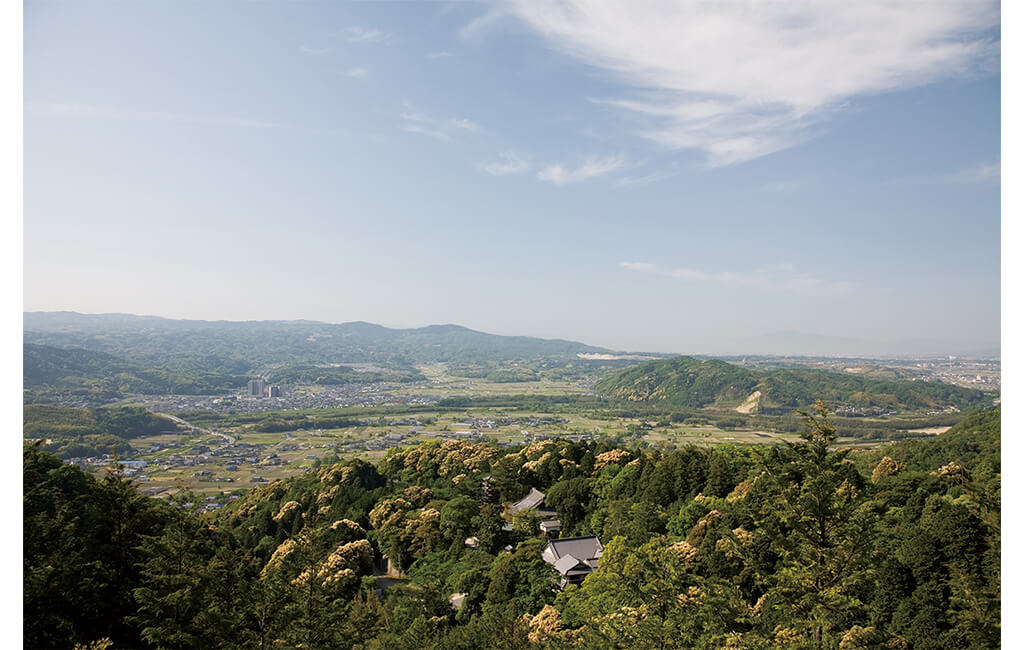
Kaijusenji Temple is located half-way up Mount Sanjoyama, overlooking the city below with a view that takes in renowned sites like Mikanohara (an area along the river in present-day Kizugawa City), the Kunikyo Ruins (an old imperial palace), and the Kizu River (the heart of the Minami Yamashiro area). In 740, the Japanese emperor ordered the national capital to be moved to Mikanohara. According to the temple legend, Kaijusenji was built northeast of the city center, a direction traditionally occupied by the kimon, or demon gate. The kimon is located in the northeast because it is believed that this is the direction from which demons come and go, and thus is a source of bad luck. Kaijusenji Temple is believed to have been placed there to pray for the safe construction of the new capital and of Todaiji Temple’s great Buddha statue. Today, however, Kaijusenji Temple is known for its view of the lower valley as well as its Five-storied Pagoda, which is a National Treasure.
History
In 740, Emperor Shomu (701–756) moved the capital to the Mikanohara area. Kunikyo, as this capital was called, functioned as the center of the state until 744. In order for the capital to be protected from evil spirits, many temples were built in this area. Kaijusenji is one such temple, built on the slopes of Mount Sanjoyama. According to Onmyodo (The Way of Yin and Yang), a traditional Japanese esoteric cosmology based on philosophies introduced from China in the sixth century, the northeast is an unlucky direction associated with misfortune known as kimon, or demon gate.
Kaijusenji Temple is thought to have been placed in the northeast in 735 to counteract the kimon and safeguard the area. In 1137, the original structures of Kaijusenji Temple were lost to fire, but the temple was reconstructed seventy years later in 1208 by an influential Buddhist monk named Jokei (1155–1213). At its most prosperous, the temple boasted over fifty-eight individual structures. The characters in the name Kaijusenji Temple mean sea (kai), dwell (ju), and mountain temple (senji), referring to the mythical pure land inhabited by Kannon (the Buddhist avatar of mercy), which is said to lie far off in the southern seas.
Treasures and Artifacts
Kaijusenji Temple also has several important works of art and cultural treasures. Among Kaijusenji Temple’s structures, its five-storied pagoda is a designated National Treasure, and its Monjudo Hall is an Important Cultural Property. They were both originally constructed in the Kamakura period (1185–1333). The Standing Four Heavenly Kings (Shitenno Ryuzo) statues from the same period used to be enshrined in the pagoda but are now entrusted to the Nara National Museum. The main hall and the sanctuary both enshrine consecrated Buddhist statues of Kannon, the beloved Buddhist avatar of compassion. These two Standing Eleven-Headed Kannon are thought to date back even earlier, to the Heian period (794–1185), and are Important Cultural Properties.
Five-Storied Pagoda
The Five-Storied Pagoda of Kaijusenji Temple is a Japanese National Treasure. It is a rare remaining example of Kamakura period (1185–1333) temple architecture, standing at about 17.7 m. The pagoda was constructed to serve as a reliquary for busshari, the precious physical remains of Shaka Nyorai, the historical Buddha otherwise known as Prince Siddhartha. When Prince Siddhartha died, his body was cremated by his disciples. In 1214, Jokei (1155–1213), an influential Buddhist monk, bestowed two pieces of busshari he received from the emperor to Kaijusenji Temple. This five-storied pagoda was built to enshrine them.
The original construction did not include a mokoshi (skirt story, or secondary roof), but one was added decades later. The mokoshi was lost during later reconstruction. Finally, when the pagoda was restored in 1962, the mokoshi was installed once again. This additional roof is one of the unique features of this pagoda. Of the five-storied pagodas built since the Edo period that have a mokoshi, this is one of only two that remain. The pagoda used to house Kaijusenji Temple’s Four Heavenly Kings (Shitenno), but these statues are now at the Nara National Museum.
Pair of Standing Eleven-Headed Kannon Statues
The main hall enshrines the principal deity of Kaijusenji Temple, a consecrated Buddhist statue of Kannon, the beloved Buddhist avatar of boundless compassion. An Important Cultural Property, this Standing Eleven-Headed Kannon statue was made in the Heian period (794–1185).
The sanctuary houses another Standing Eleven-Headed Kannon statue, which is also an Important Cultural Property dating to the Heian period. This sculpture is 45.5 cm in height and is carved from a single piece of wood. Its rounded features are reminiscent of a carving style from an era even earlier than its creation. Viewed from the front, the hip is twisted left and the right knee is somewhat bent.
From the side, its upper body leans back slightly while the right hand is somewhat extended from the elbow. This posture provides the impression of movement as though Kannon is trying to move its right arm and leg forward. This composition may point to the intent of the sculptor to draw a vital sense of movement out from a single, stationary piece of wood. The statue is now part of the Nara National Museum collection.